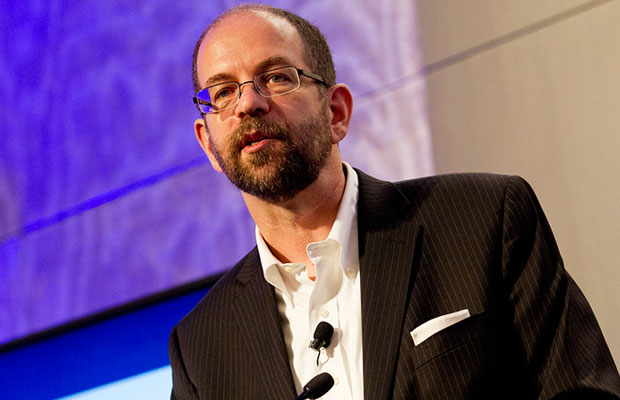Toyota Motor on Friday announced plans to launch a new company, Toyota Research Institute, as part of a five-year US$1 billion investment in artificial intelligence and robotics technology for automobiles.
The new company will begin operations in January 2016 under the leadership of Toyota’s executive technical advisor Gill Pratt (pictured above). Its headquarters will be in Silicon Valley near Stanford University, and a second facility will be located near the Massachusetts Institute of Technology.
The plan is three-pronged, Pratt said at a press conference in Japan. The institute aims to improve automobile safety to make sure the car is not involved in an accident; to make driving accessible to everyone, regardless of ability; and to apply Toyota technology used for outdoor environments to helping senior citizens grow older in the dignity of their own homes.
“The purpose of TRI is to bridge the gap between fundamental research and product development of live-saving and life-improving technologies,” said Pratt at the event. “TRI will focus first on collaborative autonomy and artificial intelligence — the way people and machines can work together, particularly in the area of mobility.”
Research Efforts
In addition to the $1 billion investment, Toyota will pour another $50 million into jointly established artificial intelligence research centers at Stanford and MIT.
Toyota earlier this year introduced Pratt — who previously was the research manager for the Defense Advanced Research Project Agency and leader of the DARPA Robotics Challenge — as the head of its research initiative at Stanford and MIT.
Completely self-driving cars is the focus of only one company at present, which is Google, noted Praveen Chandrasekar, automotive & transportation research manager at Frost & Sullivan.
“All the other conventional OEMs — and even Tesla — are focusing on providing an automated experience that kicks in during specific driving or traffic conditions with the end objective that driving stress and human errors can be eliminated,” he told the E-Commerce Times.
Toyota is committed to bringing “level 3 automated vehicles that can steer, change lanes, and merge into traffic by 2020 in Japan, which relies on a range of sensors,” Chandrasekar said.
While the initial focus of the investment may be on how to apply AI and robotics to making safer cars, Toyota’s larger aim is to expand the use of these technologies beyond the automobile, said Jeremy Carlson, senior analyst at IHS Automotive.
The goal is not only to make society safer, but also to improve the living conditions of the larger society — particularly the elderly, he told E-Commerce Times.
“As is increasingly the case with new technology, AI has many applications in many areas of life and industry, and investment in its research and development can scale when it addresses more than a single-use case,” Carlson said.
Rival Moves
Toyota’s announcement follows several high-profile moves by rival automakers and other major technology companies to advance driverless cars and related technologies. Google recently announced the hiring of John Krafcik, the president of Truecar and former CEO of Hyundai’s U.S. operations, to lead its autonomous vehicle division.
Google earlier this year announced plans to begin testing its autonomous vehicles on public roads.
Taking another step toward autonomous vehicle technology, Tesla last month introduced autopilot software that can assist in parking and changing lanes.
Both Stanford and MIT initially will focus on some very specific areas of research to make sure the project doesn’t run too far afield of its goals, IHS’ Carlson said.
Stanford will target sensing and perception, learning in all conditions, particularly deep learning and machine learning, human-centric interaction, and decision making and reasoning.
MIT will focus on a number of development efforts: tools to collect and analyze navigation data to learn to drive; precision systems for navigation; systems to handle difficult driving situations; predictive models to anticipate car and driver behavior; and a more intelligent human-machine interface.
Implementing driverless technologies in automobiles on a mass scale is a long-term proposition.
One in 10 automobiles will be capable of autonomous driving by 2035, IHS predicted.
A Toyota spokesperson was not immediately available to comment for this story.























































Social Media
See all Social Media